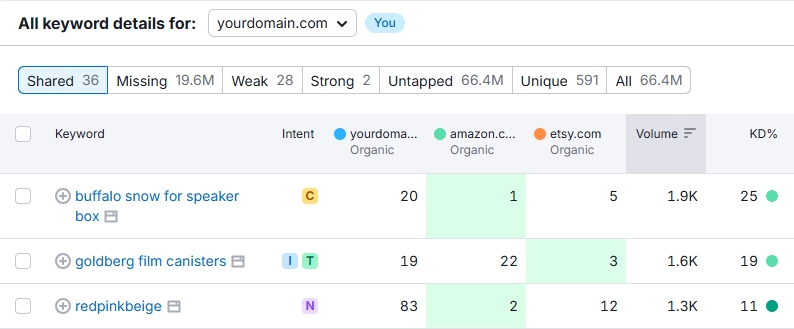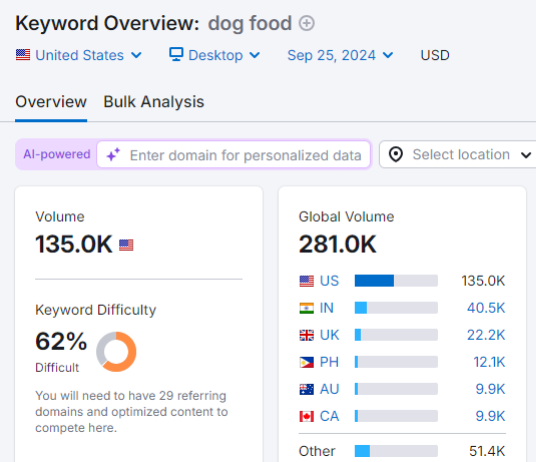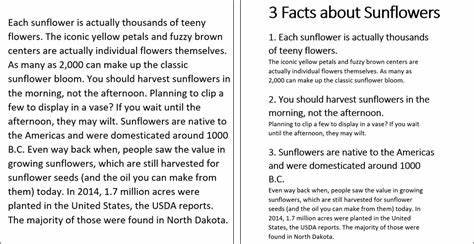Whether you’re new to SEO and trying to learn SEO Copywriting, or looking to sharpen your skills, this comprehensive guide will show you how to create content that not only connects with your audience but also catches the eye of search engines.
In this easy-to-follow guide, you’ll uncover strategies to write engaging, high-ranking content.
Plus, some bonus tips to keep users hooked, while improving your overall SEO performance.
Let’s jump right in:
1. What is SEO Copywriting?
You likely already know that Search Engine Optimization (SEO) is about helping search engines like Google and Microsoft Edge understand your content better, so it can rank higher.
SEO copywriting is about writing content that search engines understand but also appeals strongly to people.
The ultimate goal is to influence people to take action.
You want the to build an audience that’s willing to take the next step —whether it’s choosing to read your content, sharing it, subscribing to your newsletter, or making a purchase, depending on the call-to-action (CTA) you’ve chosen.
How Does Good Copy Help?
Well, well-written copy optimized for both users and SEO can significantly impact your search engine rankings. Compelling copy attracts several key ranking signals, including:
- Above-Average Click-Through Rate: More people clicking on your link than average indicates high interest and engagement.
- Higher Dwell Time: The longer visitors stay on your page before returning to the search engine results page (SERP), the better.
- Plenty of Social Shares: Content that resonates is more likely to be shared across social media platforms.
- Engaging Comments and Community Interaction: Active discussions and feedback demonstrate that your content is connecting with your audience.
These factors lead to:
- Increased Backlinks: More websites linking to your content which boosts your authority and rankings.
- Lower Bounce Rate: A lower percentage of visitors leaving your site quickly indicates that they find your content valuable.
Want to achieve both great SEO and effective copywriting? Mastering both skills is the way to go!
So where should you start you ask?
2. Find and use the right Keywords
Keywords are the words or phrases that people type into search engines to discover information or products.
When you’re ready to write content, knowing what people are searching for on that topic can be incredibly helpful. To optimize your content effectively, you should incorporate relevant keywords to improve your search engine rankings.
User’s Search Intent
Figuring a keyword’s search intent is crucial; it gets to the heart of why someone is searching.
Satisfying this intent is vital because search quality is one of Google’s main objectives in delivering what users are looking for.
So, what are the different types of user search intent?
- Informational: Users seek to learn more about a particular topic, product, or industry. For example, “What is SEO?”
- Navigational: Users aim to locate a specific website or page. For instance, “Instagram login.”
- Commercial: Users conduct research prior to making a purchase. An example would be “best running shoes.”
- Transactional: Users intend to purchase a product or service. For example, “best wrokout programme.”
You can quickly find a keyword’s intent just by typing it into Keyword Overview.
Competitor Content
An easier way to target certain words is to simply use your competitor’s content. Check what is working for them, and build upon it.
Begin by pinpointing the keywords your competitors are ranking for that you haven’t targeted yet. Each of these keywords represents an opportunity for you to attract more traffic.
A great way to do this is Semrush’s Keyword Gap tool.
- Enter your domain in the “Root domain” field.
- Input up to four of your top competitors’ domains below.
- Click “Compare.”

- Scroll down to view the list of keywords.
- Click on “Missing” to filter for keywords that your competitors rank for, but you do not.

- Sort for higher-volume keywords that are relatively easier to rank for by using the keyword difficulty (KD%) column
- Make these keywords a priority in your content strategy!
Use Keywords That Satisfy Your Audience Needs + Topic Area.
Keywords can guide you and give you a clear idea of how to approach your writing.
Choosing the right keywords can help you craft content that performs well in Google searches and brings organic traffic to your website.
Additionally, Longer keywords, especially those between 10 and 15 words, usually see a boost in click-through rates (CTR). In fact, they can get 1.76 times more clicks than single-word keywords!
Begin by focusing on specific keywords that pertain to your niche and have low competition. Consider using a keyword research tool like Semrush’s Keyword Magic Tool.
But remember, do not just stuff a keyword into your post.
Instead use LSI (latent semantic indexing) keywords- terms that are conceptually linked to your main keywords.
Simply put, use synonyms and related terms
Because, if you were to write content only for Google, your content would most likely sound robotic and awkward.
Consider this example:
Original:
Self-confidence makes you more confident in your abilities, which in turn increases your self-confidence. Here are other ways you can increase your self-confidence.
If you rewrite this content to suit both readers and search engines, it might look like this:
Revised:
The more effort you put into something, the easier it becomes, strengthening your belief in your abilities. This, in turn, enhances your self-confidence. There are other ways to boost it as well…
Of course, you could use that sentence without the keyword “self-confidence” and replace it with “self-esteem,” but that wouldn’t optimize your content, which is not your goal.
Using LSI keywords helps search engines grasp the overall context of your page.
You can find related keywords by searching for your main keyword on Google, scrolling to the bottom of the page, and examining the “related searches.”

Plus, there’s the “People Also Ask” block that gives users additional questions related to their search query.
Like this:

3. How to Optimize your content
Long-Tail Keyword
Usually, for smaller sites, ranking can be challenging. Just look at e-commerce sites like Amazon, which dominate Google’s first page. However, it is still possible to achieve a good ranking.
How?
By focusing on longer-tail keywords that are more specific.
What does this look like?
For instance, say you sell pet food and try to use “dog food” as your keyword, tools like Semrush’s Keyword Tool indicate that this keyword has a difficulty score of 62%.

This score suggests that ranking highly for this keyword would be difficult.
So, what should you do instead?
Recall our earlier discussion about looking for related words. When you search “dog food for” in a search engine, you’ll see several related options returned:

Now, take a long-tail keyword like “dog food for allergies” and compare its competitiveness to “dog food.”

As you can see, the keyword is an improvement, but still has a high difficulty score. Let’s try another prompt.
Here are the results for “dog for sensitive skin”

This long-tail keyword has a keyword difficulty score of 27%.
Since it’s more attainable, this is the long-tail keyword you should target!
Optimize for HTML
Any part of your webpage defined in HTML is considered an HTML element, which is the default code for webpages. Optimizing these HTML elements is a necessary step for search engines to read and understand your content effectively, allowing them to rank you appropriately.
By focusing on your chosen long-tail keyword, you should optimize key HTML components, including headers, title tags, meta descriptions, and URLs. For example, incorporating your long-tail keyword in the title tag and meta description enhances your visibility in search results.
Structuring your content with clear headers improves readability, while using clean, descriptive URLs helps both search engines and users navigate your site more easily. For example:

Overall, this optimization is essential for improving search engine rankings, increasing click-through rates, and providing a better user experience.
Let’s review this with more clarity
Title tags
Title tags are HTML elements that specifies the title of a webpage for search engines and web browsers.
Why are they so important?
Well, you need them to rank for associated terms.
For instance, if you want to rank for “chocolate cake recipe,” your title tag must include “chocolate cake” or a close variation; otherwise, Google may not see your page as relevant.
1. How you appear in search results

2. Title tags appear in link previews
On social media sites like X, link previews with optimized title tags with a title, image, and description are more likely to attract clicks.

3. Title tags appear in browser tabs
When you have multiple pages open on your device, title tags help you easily navigate to the page you want

Note: While there is no strict limit on title tag length, title tags that are between 40 to 60 characters generally have the highest click-through rates (CTR).
Modifiers
To gain traffic from long tail keywords, you should consider using Title tag Modifiers.
These are words you include in your title tag to help it rank for long-tail keywords such as:
- “How to…”
- The current year e.g checklist for 2024
- Review
- Best
- Fast
- Checklist
- Guide
- Tips
- Easy
- Simple
A simple tweak, such as including or updating the year, has been proven to spark user interest, thereby helping to increase your click-through rate
Meta Descriptions
A meta description is a brief summary of a webpage that appears as a snippet under the title and URL of the page.

Your meta descriptions need to be unique, informative, and closely related to the content of the page.
page.
URLs
Incorporate keywords into your URLs. Keep your URLs short yet rich with keywords!
Example URL: https://example.com/layered-chocolate-cake-recipe
URLs that feature terms related to a keyword have been shown to have a 45% higher click-through ratethan those that don’t include any keywords.
Note: If you have existing long URLs, it’s generally not advisable to change them, as this can cause technical issues. Instead, apply this rule to your future pages.
Optimization doesn’t end there!
Publishing your article and optimizing your titles and URLs is just the beginning.
The cornerstone of any SEO content strategy is creating useful material, so remember to update your articles regularly!
Trends and research findings constantly change and evolve. Aim to keep your content current to avoid becoming outdated.
Additionally, if you have links to pages that no longer exist, consider updating those as well. Websites with broken links and outdated information lose readers’ trust, which can also diminish Google’s trust in your site.
Remember, you want your site to be seen as relevant and useful to users. Maintain this by providing current, reliable information.
4. Make them click!
Boosting your organic click-through rate (CTR) is essential for ranking well on search engines. Even without it, increasing your CTR is crucial for driving organic traffic to your site.
You need content that not only encourages viewers to click but also keeps them engaged once they arrive. This is achieved through both engaging content and a seamless user experience.
Now let’s cover how SEO Copywriting makes a users experience better.
SEO Copywriting Enhances User Experience signals
User experience (UX) signals are how Google measures content quality through metrics such as:
- Bounce rate
- Time on site
- Pogo sticking (when users quickly bounce back to search results after clicking a link that doesn’t meet their needs)
All SEO experts agree: better UX signals lead to higher rankings, while poor UX signals can result in lower rankings.
So, how do we make users click and stay on our site?
Here are some useful tips:
Tips for SEO Copywriting Success
When a person visits your site, one of two things can happen:
- They leave instantly.
- They keep reading and browsing your website.
The latter makes search engines think “This is a relevant page. Let’s boost it”(Remember, the opposite holds true).
So how do you prevent people from bouncing?
Start with your title.
Title tags and Meta descriptions
If you run a blog, what’s the best way to capture people’s attention?
Emotion of course!
I’m sure you’ve heard the regular cliche’s that as humans we are emotional beings.
Well its true.
As emotional beings, we’re drawn to titles that address search intent or are so intriguing that we feel compelled to click.
But, keep it short—data shows that title tags with the highest CTR are between 40 to 60 characters.
Your Meta Decsription is your chance to sell your content.
Aim for under 120 characters, as Google cuts visibility beyond this point on mobile.
Incorporate a call to action (CTA) or provide a unique description to make your content irresistible. Remember to sprinkle positive and persuasive emotions into your titles and descriptions while keeping your keywords in mind. a
And steer clear of sounding overly click-baity!
Content tips
Here are some valuable tips to enhance your content:
1. Make it easy to read
Imagine reading content with no headings, no spacing, no text formatting (such as bold words).
Just line after line after line- a wall of text.
How dreadful right?
No one would be interested in reading that for long.
As you can see below, the left side demonstrates this, while the right side is far more captivating for long-term interest.

So, use this brief guide:
- Structure your content with clear, informative headers.
- Provide clear, easy-to-follow paragraphs.
- Use short sentences.
- Use simple vocabulary.
- Check tone and readability
Why do these work?
Well the point is to make content easier to consume for anyone reading.
A well-structured piece allows readers to understand the direction of your blog and skim for relevant information.
2. The APP Method
The Agree, Promise and Preview (APP) method can help improve time on page.
Let’s dig a little deeper:
- Agree: Show users that you understand their problem. For example, if people searching for “binging” are frustrated with ineffective techniques, emphasize that your methods “actually” work.
- Promise: Offer a glimpse of a better future.
- Preview: Clearly outline what you have planned for your reader.
Clarity and concise sentences help you make your point faster and make the content more digestible. Avoid overly complex language unless it’s a technical topic; readers should feel encouraged to continue reading.
3. Consider “Bucket Brigades”
Bucket brigades are attention-grabbing phrases or questions that keep readers engaged and encourage them to continue reading.
The best way to do this is to find places in your content where users might leave your page and insert a bucket brigade.
Here’s are examples:
- In my experience…
- Think about it …
- Let me explain why…
- Simply put…
- But wait—there’s more!
- Here is how it works…
- The secret?
- What does this mean for you?
- Have you noticed?
- And the good news?
Try notice the use of bucket brigade’s throughout the rest of the blog.
4. Use visual elements
Images, graphs, and other visual elements enhance post engagement.
They help readers understand content better and provide a break from dense text.
Plus,, they are particularly beneficial for sharing posts on social media.
*Make sure to follow SEO image practices:
- Compress images for faster loading times.
- Use descriptive file names to help search engines understand what the image is about.
5. CTA’s
Most importantly, a key purpose of copywriting is conversion, whether that’s making a sale or gaining subscribers.
Clearly indicate a call to action, such as a “Subscribe to learn more” button or text inviting readers to explore other related information.
When users respond, it sends positive engagement signals to search engines, which is beneficial for your rankings!
6. Tone and readability
Review your content to ensure it:
- Includes keywords.
- Maintains a consistent tone.
- Contains clear, understandable sentences.
- Is plagiarism-free.
A great way to fine-tune your content’s tone of voice and readability score is with Semrush’s SEO Writing Assistant
Stick to these steps, and you’ll be well on your way to creating high-quality content!
Measuring Success
How do you measure metrics with so much data available?
It depends on your goals.
it’s typically recommended to wait 3-6 months before reviewing SEO analytics. Conduct SEO audits every quarter to evaluate visible success.
- Engagement Metrics: Review likes, shares, comments, and click-through rates to understand user interaction with your content.
- User Behavior Metrics: Assess how well your content performs based on page views, pages per session, time on site, bounce rate, and new vs. returning users.
- Company Revenue Goal Metrics: Ultimately, prioritize the bottom line: ROI, conversion rates, and cost per acquisition.
Choosing metrics is easier than the actual measuring part, but always ensure you’re managing to reach your goals.
Conclusion
That’s all from me about SEO copywriting.
Do you feel that this was a helpful introduction?
Is there something that caught your eye?
Let me know by leaving a comment below


